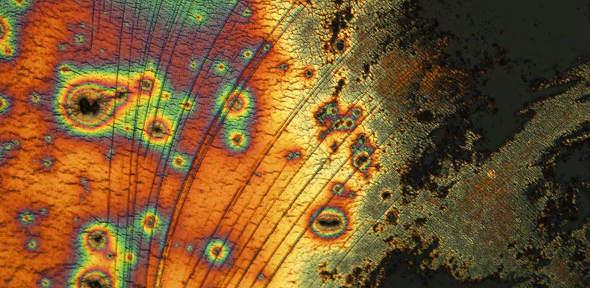
In this video Dr Ingrid Graz shows us a thin layer of gold on top of rubber. Cracks in the gold allow it to stretch and we can use this for stretchable electronics.
Stretchable electronics is a new evolution of electronics - the idea is to create electronic devices that can be rolled, flexed, deformed and even stretch like a rubber band.
Dr Ingrid Graz
Under the Microscope is a collection of videos that show glimpses of the natural and man-made world in stunning close-up. They are published on the University of Cambridge website and on the io9 website.
Dr Graz:
“Imagine a future mobile phone that can be wrapped around your wrist or an MP3 player that is integrated in your T-shirt. Stretchable electronics is a new evolution of electronics – the idea is to create electronic devices that can be rolled, flexed, deformed and even stretch like a rubber band. To enable stretchable electronics we use rubber such as silicone coated with a very thin layer of gold. The gold serves as a stretchable conductor and can be elongated to twice its original length without electrical failure. The secret behind the stretchability lies within the microstructure. Tiny cracks in the film open up when it is stretched without damaging the film. This image shows a silicone rubber with a gold layer and an additional silicone layer to protect the electrode.”
The image is about 3x3mm.

